On the internet, there are numerous lists about the 10 most famous paintings in humanity, generally with little variation among them.
However, we could not find any list of the 10 most important and transcendental paintings by each of the 10 most famous and influential artists in history.
So at KUADROS we set out to create a complete compendium of the 10 most important and representative paintings created by each of these geniuses of art in our history.
Below are the 10 most important paintings of each of the 10 most famous artists in humanity.
No.1 Leonardo da Vinci (1452-1519):
 Leonardo da Vinci is one of the most famous artists of the Italian Renaissance, and his works have been the subject of study and admiration for centuries. Here are the 10 most famous and important paintings by Leonardo da Vinci:
Leonardo da Vinci is one of the most famous artists of the Italian Renaissance, and his works have been the subject of study and admiration for centuries. Here are the 10 most famous and important paintings by Leonardo da Vinci:
- The Mona Lisa (1503-1506): Also known as La Gioconda, it is a painting of a woman with an enigmatic smile. It is considered one of the most famous works of art in history.
- The Last Supper (1495-1498): A fresco located in the Dominican convent of Santa Maria delle Grazie in Milan, Italy. It represents the last supper of Jesus with his disciples before being crucified.
- The Annunciation (1472-1475): An oil on panel depicting the moment when the angel Gabriel announces to the Virgin Mary that she will be the mother of Jesus.
- Saint John the Baptist (1513-1516): An oil on panel depicting Saint John the Baptist with a gesture of blessing.
- The Adoration of the Magi (1481-1482): An oil on panel depicting the Three Wise Men adoring the baby Jesus.
- The Virgin and Child with Saint Anne (1503-1507): An oil on canvas depicting the Virgin Mary, the baby Jesus, and Saint Anne.
- The Virgin of the Rocks (1483-1486): An oil on panel depicting the Virgin Mary, the baby Jesus, Saint John the Baptist, and an angel.
- The Virgin of the Spindle (1506-1515): The Virgin of the Spindle is a masterpiece by the renowned Italian artist Leonardo Da Vinci, dating from the 15th century. This painting is one of the highlights of the Renaissance period and is considered one of the most beautiful representations of the Virgin Mary.
- The Battle of Anghiari (1503-1506): A fresco depicting the Battle of Anghiari, although unfortunately it has not been preserved in its original form.
- Dama of the Ermine (1488-1490): Also known as The Lady with an Ermine, it is an oil on panel depicting Cecilia Gallerani, a young noblewoman at the Milanese court. In this work, Leonardo da Vinci captures the beauty and elegance of the lady, who delicately holds an ermine in her arms. The ermine, a small animal with white fur, symbolizes purity and virtue. The painting stands out for its masterful use of light and shadow, as well as for the intricate details in the folds of the clothing and the serene expression of the subject. The Lady with an Ermine showcases Leonardo's skill in capturing the personality and grace of his models, making it a highlight within his artistic repertoire.
No. 02 Pablo Picasso (1881-1973).
 Pablo Picasso is one of the most influential artists of the 20th century, the creator of Cubism, and the author of iconic works such as Guernica. Here are the 10 most important paintings by Pablo Picasso:
Pablo Picasso is one of the most influential artists of the 20th century, the creator of Cubism, and the author of iconic works such as Guernica. Here are the 10 most important paintings by Pablo Picasso:
- Guernica (1937): An oil painting representing the horrors of the Spanish Civil War. It is considered one of the most powerful and political works of art of the 20th century.
- Les Demoiselles d'Avignon (1907): An oil painting depicting five prostitutes in a brothel in Barcelona. It is one of the most influential works of modern art and one of the first paintings of the Cubist movement.
- The Persistence of Memory (1931): An oil painting depicting melting clocks. It is one of the most iconic works of Surrealism.
- Three Musicians (1921): An oil painting depicting three musicians playing different instruments in an interior setting. It is considered one of the best works of Picasso's neoclassical period.
- The Weeping Woman (1937): An oil painting depicting a woman crying. It was inspired by the Spanish Civil War and is considered one of Picasso's most emotive works.
- The Young Ladies of Avignon (1907): An oil painting depicting five prostitutes in a brothel in Barcelona. It is one of Picasso's first Cubist works.
- Still Life with Straw Chair (1912): An oil painting representing a still life with everyday objects like a straw chair and a newspaper. It is a key work in synthetic Cubism.
- The Blind Guitarist (1903-1904): An oil painting depicting an old blind man playing a guitar. It is considered one of the most poignant works of Picasso's blue period.
- The Dance (1925): An oil painting depicting a group of figures dancing. It is a key work in Picasso's classical period.
- Harlequin (1915): An oil painting depicting a character from the Italian commedia dell'arte. It is a key work in Picasso's Cubist period.
No. 3 Michelangelo Buonarroti (1475-1564):
 Michelangelo Buonarroti is one of the most prominent artists of the Italian Renaissance, known for his masterpieces in sculpture, architecture, and painting. Here are the 10 most important paintings by Michelangelo:
Michelangelo Buonarroti is one of the most prominent artists of the Italian Renaissance, known for his masterpieces in sculpture, architecture, and painting. Here are the 10 most important paintings by Michelangelo:
- The Creation of Adam (1508-1512): It is a fresco located on the ceiling of the Sistine Chapel in the Vatican. It is one of Michelangelo's most famous works and represents the moment when God creates man.
- The Last Judgment (1536-1541): Also located in the Sistine Chapel, it is a fresco depicting the Second Coming of Christ and the final judgment.
- The Creation of Eve (1510): Fresco in the Sistine Chapel showing the creation of Eve from Adam's rib.
- The Prophet Zechariah (1508): A marble sculpture representing King David of Israel. It is located in the Gallery of the Academy of Florence.
- The Original Sin and the Expulsion from Paradise (1510): Fresco in the Sistine Chapel representing the original sin of Adam and Eve and their expulsion from the Garden of Eden.
- The Conversion of Saul (1542-1545): A fresco located in the Pauline Chapel in the Vatican, depicting the conversion of Saul to Christianity.
- The Ignudi (1511): Series of twenty nude male figures adorning the Sistine Chapel.
- The Holy Family (1506-1508): An oil on canvas depicting the Virgin Mary, the baby Jesus, and Saint John the Baptist. It is located in the Uffizi Gallery in Florence.
- The Crucifixion of Saint Peter (1546-1550): A fresco located in the Pauline Chapel in the Vatican, depicting the crucifixion of Saint Peter.
- The Madonna della Scala (c. 1490-1492): An oil on panel depicting the Virgin Mary and the baby Jesus. It is located in the Museum of the Opera del Duomo in Florence.
No. 04 Rembrandt van Rijn (1606-1669):
 Rembrandt is a Dutch Baroque artist known for his portrait and landscape paintings, as well as his ability to depict light and shadow. Here are the 10 most important paintings by Rembrandt:
Rembrandt is a Dutch Baroque artist known for his portrait and landscape paintings, as well as his ability to depict light and shadow. Here are the 10 most important paintings by Rembrandt:
- The Night Watch (1642): It is a large oil on canvas depicting a group of Dutch militiamen in a nighttime scene. It is located in the Rijksmuseum in Amsterdam and is considered Rembrandt's masterpiece.
- The Return of the Prodigal Son (1669): It is an oil on canvas depicting the biblical parable of the prodigal son. It is located in the Hermitage in Saint Petersburg and is considered one of the most moving works of Rembrandt.
- The Anatomy Lesson of Dr. Tulp (1632): It is an oil on canvas depicting a group of doctors and anatomists performing a dissection. It is located in the Mauritshuis in The Hague and is considered one of the most important works of Rembrandt.
- The Jewish Bride (1667): It is an oil on canvas depicting a Jewish woman dressed in white with a floral crown on her head. It is located in the Rijksmuseum in Amsterdam and is considered one of the most poetic works of Rembrandt.
- The Day Watch (1640-1641): It is an oil on canvas depicting a group of civil guards in a daytime scene. It is located in the Rijksmuseum in Amsterdam and is considered one of the most representative works of Dutch Baroque.
- Self-portrait with Two Circles (1665-1669): It is an oil on canvas in which Rembrandt portrays himself with two circles in the background symbolizing his artistic vision. It is located in Kenwood House in London and is considered one of the most famous self-portraits in art history.
- Bathsheba at Her Bath (1654): It is an oil on canvas depicting Uriah's wife, Bathsheba, bathing in a public bath. It is located in the Louvre Museum in Paris and is considered one of the most sensual works of Rembrandt.
- The Syndics of the Cloth Merchants (1662): It is an oil on canvas depicting the five syndics of the Guild of Cloth Merchants of Amsterdam. It is located in the Rijksmuseum in Amsterdam and is considered one of the most representative works of Dutch Baroque collective portraiture.
- Samson and Delilah (1628): It is an oil on canvas depicting the biblical story of Samson and Delilah. It is located in the Gemäldegalerie in Berlin and is considered one of the most dramatic works of Rembrandt.
- The Sacrifice of Isaac (1635): It is an oil on canvas depicting the moment when Abraham is about to sacrifice his son Isaac. It is located in the Hermitage Museum in Saint Petersburg and is considered one of the most moving works.
No. 05 Vincent van Gogh (1853-1890):
 Vincent Van Gogh is one of the most recognized and popular artists in the history of art, famous for his post-impressionist style and his vibrant and expressive technique. Here are the 10 most important paintings by Van Gogh:
Vincent Van Gogh is one of the most recognized and popular artists in the history of art, famous for his post-impressionist style and his vibrant and expressive technique. Here are the 10 most important paintings by Van Gogh:
- The Starry Night (1889): It is an oil on canvas depicting the night sky with a tall cypress tree and a village in the background. It is located in the Museum of Modern Art in New York and is considered Van Gogh's masterpiece.
- Sunflowers (1888): It is a series of 12 paintings depicting sunflowers at different stages of maturity. They are located in various museums and private collections around the world and are considered some of Van Gogh's most iconic works.
- Self-Portrait with Bandaged Ear (1889): It is an oil on canvas in which Van Gogh represents himself with a bandage on his ear. It is located in the Courtauld Gallery in London and is considered one of the most dramatic self-portraits in art history.
- The Bedroom in Arles (1889): It is an oil on canvas depicting the artist's bedroom in Arles, France. It is located in the Art Institute of Chicago and is considered one of Van Gogh's most famous works.
- Night Café (1888): It is an oil on canvas depicting a night café in Arles, France. It is in the private collection of Yale University and is considered one of Van Gogh's most vibrant and emotional works.
- Wheat Field with Cypresses (1889): It is an oil on canvas depicting a wheat field with a large cypress in the background. It is located in the National Gallery in London and is considered one of Van Gogh's most impressive works.
- La Siesta (1889): It is an oil on canvas depicting two peasant women sleeping in a field. It is located in the Musée d'Orsay in Paris and is considered one of Van Gogh's most moving works.
- Portrait of Dr. Gachet (1890): It is an oil on canvas depicting the doctor who treated Van Gogh during his mental illness. It is in a private collection and is considered one of Van Gogh's most intimate and personal works.
- The Sower (1888): It is an oil on canvas depicting peasants working in a wheat field. It is located in the Cleveland Museum of Art and is considered one of Van Gogh's most emotional works.
- Café Terrace at Night (1888): It is an oil on canvas depicting the terrace of a café in Arles, France. It is located in the Kröller-Müller Museum in the Netherlands and is considered one of Van Gogh's most iconic and recognized works.
No. 06 Claude Monet (1840-1926):
 Claude Monet is one of the founders of the Impressionist movement and one of the most important painters of the 19th century. Here are the 10 most important paintings by Claude Monet:
Claude Monet is one of the founders of the Impressionist movement and one of the most important painters of the 19th century. Here are the 10 most important paintings by Claude Monet:
- Impression, Sunrise (1872): It is an oil on canvas representing the sunrise over a port in Le Havre. It is considered the work that named the Impressionist movement.
- The Water Lilies (1915-1926): It is a series of paintings that represent Monet's water garden at his home in Giverny. It is located in the Musée d'Orsay in Paris and is considered one of Monet's representative works.
- The Gare Saint-Lazare (1877): It is an oil on canvas depicting the Saint-Lazare train station in Paris. It is located in the Musée d'Orsay in Paris and is considered one of the most important works of Impressionism.
- The Rouen Cathedral (1892-1894): It is a series of paintings representing Rouen Cathedral at different times of the day and under various weather conditions. They are located in different museums and private collections around the world and are considered some of the most emblematic works of Monet.
- The Japanese Bridge (1899): It is an oil on canvas depicting the Japanese bridge in Monet's water garden. It is located in the Musée d'Orsay in Paris and is considered one of Monet's most beautiful works.
- Poppies (1873): It is an oil on canvas depicting a poppy field in the countryside. It is located in the Musée d'Orsay in Paris and is considered one of Monet's most impressive works.
- The Garden of Monet in Giverny (1900): It is an oil on canvas depicting Monet's water garden in Giverny. It is located in the Metropolitan Museum of Art in New York and is considered one of Monet's most beautiful works.
- Picnic on the Grass (1873): It is an oil on canvas depicting a picnic with friends. It is located in the Musée d'Orsay in Paris and is considered one of the most important works of Impressionism.
- The Seine at Argenteuil (1874): It is an oil on canvas depicting the Seine River in the city of Argenteuil. It is located in the Musée d'Orsay in Paris and is considered one of the most emblematic works of Impressionism.
- Rue Montorgueil, Celebration of June 30, 1878 (1878): It is an oil on canvas representing a crowded street on the day of the French national holiday. It is located in the Musée d'Orsay in Paris and is considered one of the most important works of Impressionism.
No. 07 Johannes Vermeer (1632-1675):
 Johannes Vermeer is a 17th-century Dutch painter known for his unique technique and masterful use of light and color. Here are the 10 most important paintings by Johannes Vermeer:
Johannes Vermeer is a 17th-century Dutch painter known for his unique technique and masterful use of light and color. Here are the 10 most important paintings by Johannes Vermeer:
- Girl with a Pearl Earring (1665): It is an oil on canvas depicting a young girl with a pearl earring. It is one of the most well-known and emblematic works of Vermeer.
- The Milkmaid (1658-1660): It is an oil on canvas depicting a woman pouring milk into a jug. It is considered one of Vermeer's masterpieces.
- The Love Letter (1669): It is an oil on canvas depicting a woman reading a letter while a man looks at her. It is one of the most famous and romantic works of Vermeer.
- The Little Street (1658): It is an oil on canvas depicting a street in Delft. It is considered one of the most impressive and detailed works of Vermeer.
- View of Delft (1660-1661): It is an oil on canvas depicting a view of the city of Delft. It is considered one of the largest and most ambitious works of Vermeer.
- Woman Reading a Letter (1663-1664): It is an oil on canvas depicting a woman reading a letter while sitting next to a window. It is considered one of the most sensual and emotive works of Vermeer.
- The Guitar Player (1672): It is an oil on canvas depicting a woman holding a guitar while a man watches her. It is considered one of the most intimate and emotive works of Vermeer.
- The Astronomer (1668): It is an oil on canvas depicting a man examining a celestial globe. It is considered one of the most detailed and mysterious works of Vermeer.
- The Lady at the Virginal (1672): It is an oil on canvas depicting a woman playing a virginal. It is considered one of the most intricate and delicate works of Vermeer.
- The Laundress (1651-1652): It is an oil on canvas depicting a woman washing clothes in a river. It is considered one of Vermeer's earliest and most charming works.
No. 06 Salvador Dalí (1904-1989):
 Salvador Dalí was a Spanish painter known for his surrealist style and his works laden with symbolism. Here are the 10 most important paintings by Salvador Dalí:
Salvador Dalí was a Spanish painter known for his surrealist style and his works laden with symbolism. Here are the 10 most important paintings by Salvador Dalí:
- The Persistence of Memory (1931): It is an oil on canvas depicting a surreal landscape with melting clocks. It is considered Dalí's most famous and emblematic work.
- The Temptation of Saint Anthony (1946): It is an oil on canvas depicting the saint's struggle against his temptations. It is considered one of Dalí's masterpieces.
- The Great Masturbator (1929): It is an oil on canvas representing a self-portrait of Dalí as an androgynous being. It is considered one of the most provocative and controversial works of Dalí.
- The City of Prodigies (1978): It is a large work representing a surreal city full of details and symbols. It is considered one of the most complex and ambitious works of Dalí.
- The Metamorphosis of Narcissus (1937): It is an oil on canvas depicting the myth of Narcissus, in which a young man falls in love with his own image reflected in the water. It is considered one of the most poetic and metaphorical works of Dalí.
- Dream Caused by the Flight of a Bee Around a Pomegranate a Second Before Awakening (1944): It is an oil on canvas depicting a surreal landscape with an open pomegranate and ants. It is considered one of Dalí's most dreamlike and enigmatic works.
- Galatea of the Spheres (1952): It is an oil on canvas depicting Dalí's wife, Gala, surrounded by floating spheres. It is considered one of Dalí's most luminous and mystical works.
- The Specter of Sex Appeal (1932): It is an oil on canvas depicting a female figure in a surreal landscape. It is considered one of Dalí's most sensual and erotic works.
- The Great Paranoiac (1936): It is an oil on canvas depicting an androgynous figure in a surreal landscape. It is considered one of Dalí's most symbolic and psychological works.
- Surrealist Landscape with Elephants (1937): It is an oil on canvas depicting a surreal landscape with elephants on spider legs. It is considered one of Dalí's most extravagant and surreal works.
No. 09 Sandro Botticelli (1445-1510):
 Sandro Botticelli was an Italian Renaissance painter known for his works of mythological and religious themes. Here are the 10 most important paintings by Sandro Botticelli:
Sandro Botticelli was an Italian Renaissance painter known for his works of mythological and religious themes. Here are the 10 most important paintings by Sandro Botticelli:
- The Birth of Venus (c.1484–1486): It is an oil on canvas depicting the goddess Venus emerging from the sea on a shell. It is considered Botticelli's most famous and iconic work.
- The Spring (c.1477–1482): It is an oil on canvas depicting an allegorical scene with the goddess Venus in the center surrounded by various mythological figures. It is considered one of Botticelli's most famous and complex works.
- Adoration of the Magi (c.1475): It is an oil on panel depicting the adoration of the Three Wise Men to the baby Jesus. It is considered one of Botticelli's first masterpieces.
- The Coronation of the Virgin (c.1475–1480): It is an oil on panel depicting the coronation of the Virgin Mary by the Trinity. It is considered one of Botticelli's most important works in terms of religious themes.
- Madonna del Magnificat (c.1481–1485): It is an oil on panel depicting the Virgin Mary holding the baby Jesus while writing the Magnificat. It is considered one of Botticelli's most beautiful and delicate works.
- Saint Augustine in His Study (c.1480): It is a fresco depicting Saint Augustine in his study surrounded by books and symbolic objects. It is considered one of Botticelli's most interesting and symbolic works.
- The Annunciation (c.1489–1490): It is an oil on panel depicting the moment when the angel Gabriel announces to the Virgin Mary that she will give birth to the baby Jesus. It is considered one of Botticelli's most emotive and poetic works.
- The Visitation (c.1491–1492): It is an oil on panel depicting the meeting between the Virgin Mary and her cousin Elizabeth during their pregnancies. It is considered one of Botticelli's most important works in terms of religious themes.
- Pallas and the Centaur (c.1482): It is an oil on panel depicting the goddess Athena (Pallas) fighting a centaur. It is considered one of Botticelli's most dramatic and symbolic works.
- The Virgin and Child with Angels (c.1465): It is an oil on panel depicting the Virgin Mary holding the baby Jesus surrounded by angels. It is considered one of Botticelli's first major works in terms of religious themes.
No. 10 Diego Velázquez (1599-1660):
 Diego Velázquez was a Spanish painter of the 17th century, considered one of the great masters of European painting. Here are the 10 most important paintings by Diego Velázquez:
Diego Velázquez was a Spanish painter of the 17th century, considered one of the great masters of European painting. Here are the 10 most important paintings by Diego Velázquez:
- Las Meninas (1656): It is an oil on canvas depicting Infanta Margarita surrounded by her entourage, including her parents, King Philip IV and Queen Mariana of Austria. It is considered Velázquez's masterpiece and one of the most important works in the history of art.
- The Water Carrier of Seville (1620): It is an oil on canvas depicting a man selling water in the streets of Seville. It is considered one of Velázquez's first important works and demonstrates his ability to capture everyday reality with great realism.
- The Surrender of Breda (1634–35): It is an oil on canvas depicting the surrender of the Dutch city of Breda to Spanish forces in 1625. It is considered one of Velázquez's most important works in terms of historical themes.
- The Venus of the Mirror (1647–1651): It is an oil on canvas depicting Venus looking at herself in a mirror held by Cupid. It is considered one of the most sensual and erotic works of Velázquez.
- The Jester Don Sebastián de Morra (1645): It is an oil on canvas depicting a court jester. It is considered one of the most emotional and poignant works of Velázquez.
- Portrait of Philip IV (1644): It is an oil on canvas depicting King Philip IV of Spain in all his majesty. It is considered one of the most important portraits by Velázquez and shows his ability to capture the psychology of his subjects.
- Portrait of Innocent X (1650): It is an oil on canvas depicting Pope Innocent X. It is considered one of the most important portraits by Velázquez and showcases his ability to capture the personality and dignity of his subjects.
- The Lunch (c. 1617): It is an oil on canvas depicting three men sitting at a table enjoying a meal. It is considered one of Velázquez's first significant works and demonstrates his skill in capturing everyday life with great realism.
- Christ on the Cross (1632): It is an oil on canvas depicting Jesus crucified. It is considered one of the most moving and powerful works of Velázquez in terms of religious themes.
- Saint Anthony Abbot (c. 1630): It is an oil on canvas depicting Saint Anthony Abbot, patron of animals, surrounded by animals and demons. It is considered one of Velázquez's most interesting and symbolic works.
KUADROS © A famous painting on your wall.

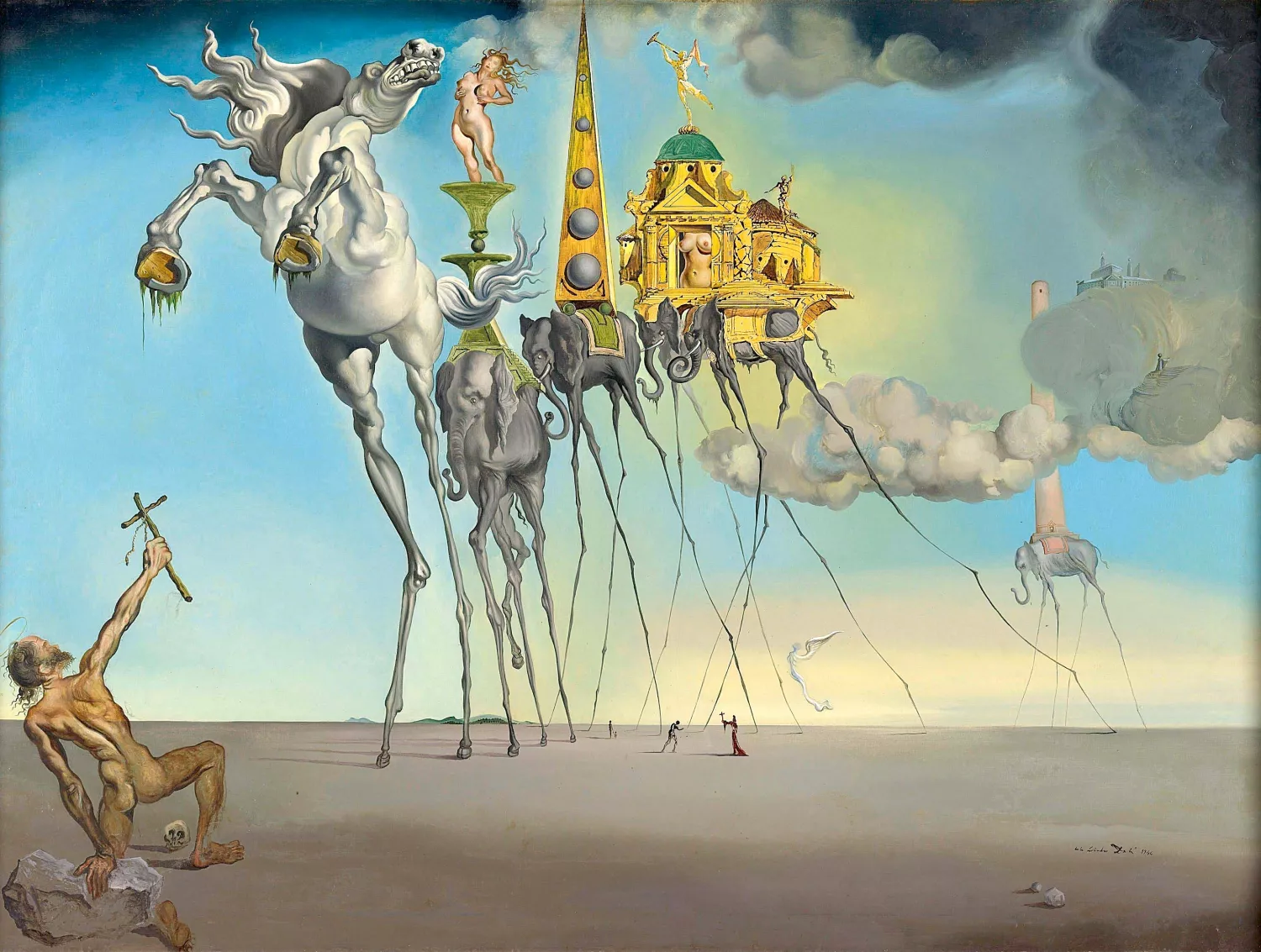
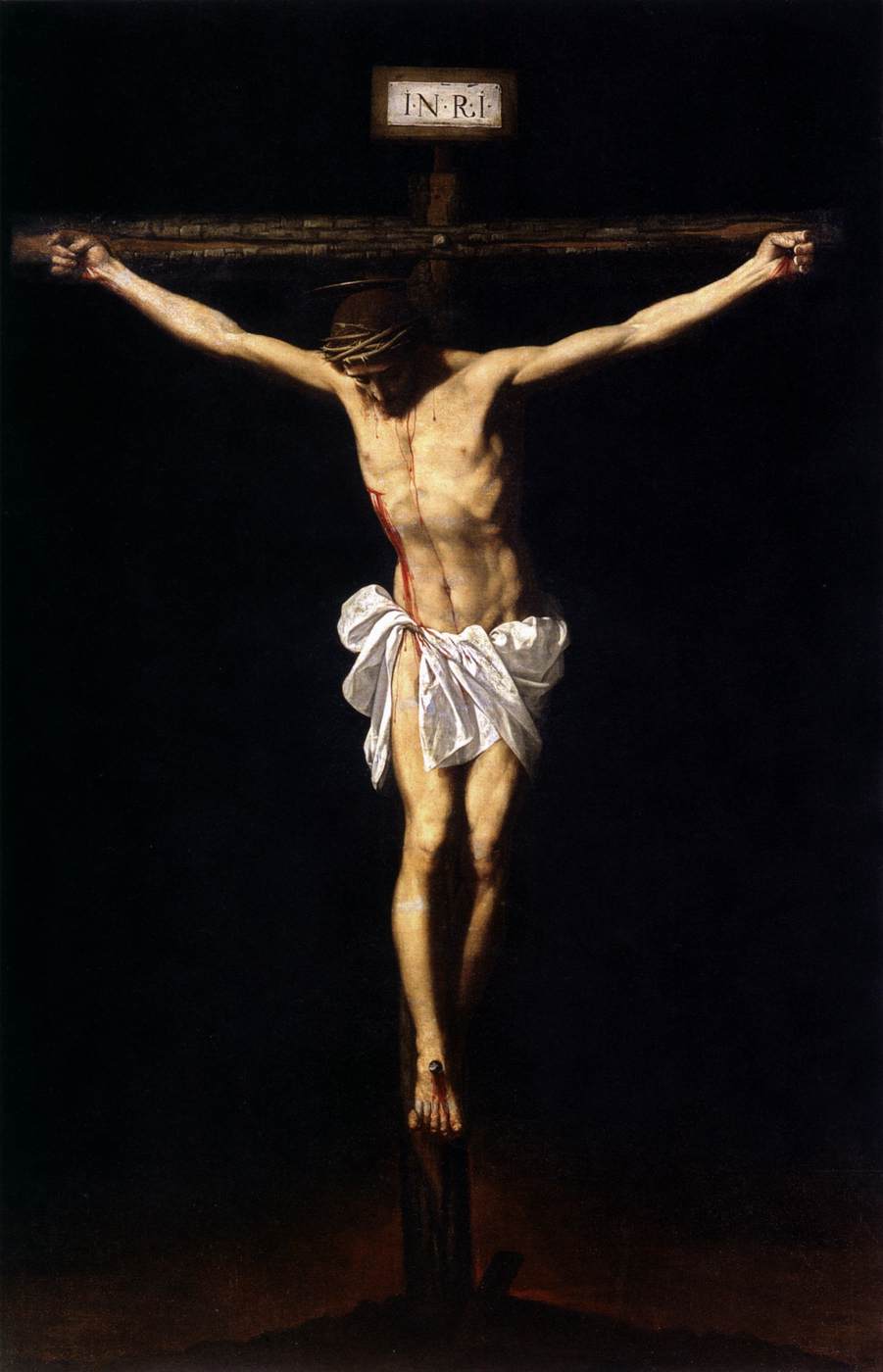
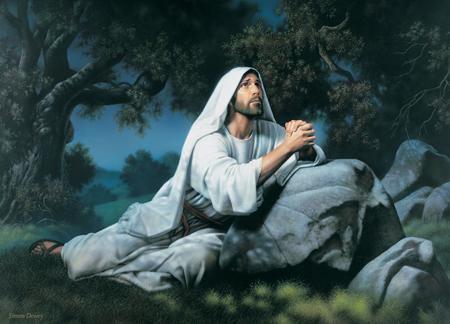
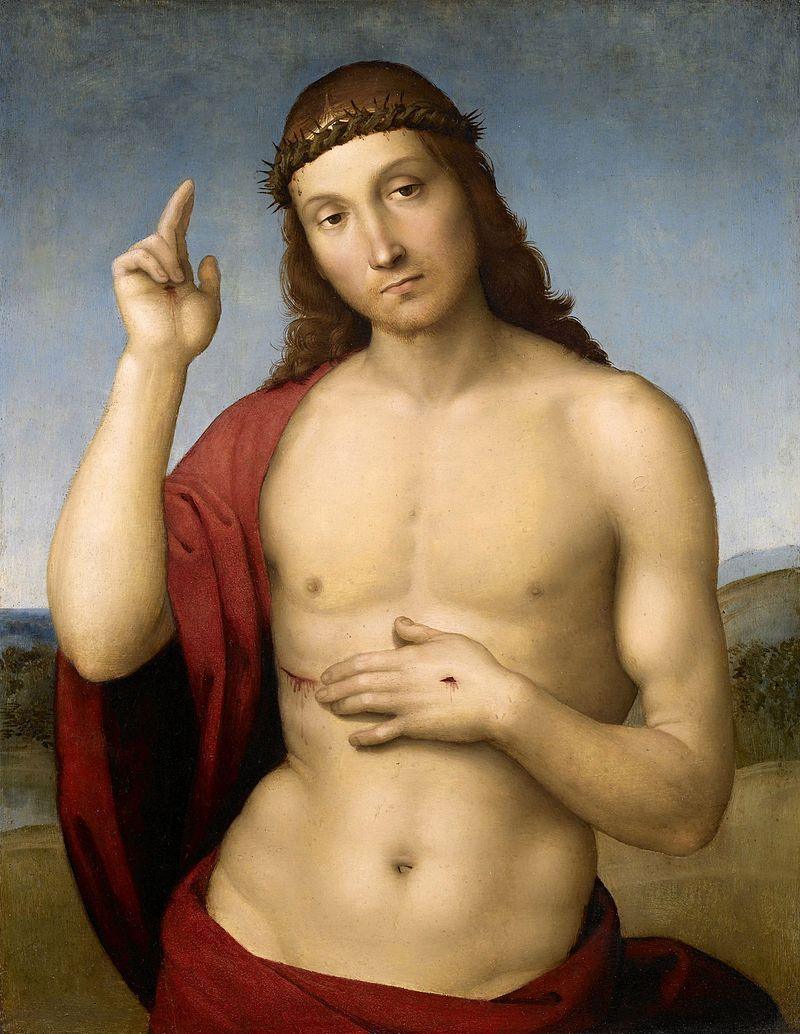
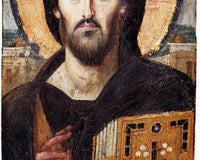
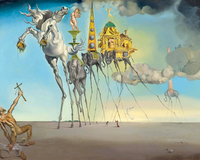
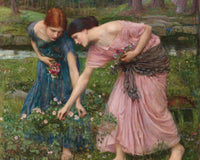

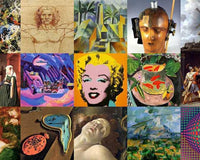
3 comments
고구마
재밌어요
고구마
재밌어요
고구마
재밌어요